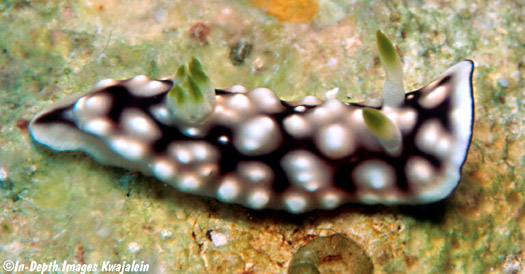
Goniobranchus geometricus is one of the few chromodorids in the Marshalls occasionally found crawling in the open during the day, although even these are more often found under chunks of dead coral. We have found them at Kwajalein and Enewetak Atolls on lagoon reefs and pinnacles as well as on the leeward seaward reef. At Enewetak, they were most common on the sponge-encrusted pilings of the old pier at Medren Island until large swells from a southwest storm in 1982 washed them and all the other pier dwelling nudibranchs away. John and Lynette Flynn also found one at Rongelap Atoll and Ken Cone and Beth Van Zummeren at Majuro. The largest of 17 measured specimens was 35mm. Goniobranchus geometricus was first reported in the Marshalls from Enewetak Atoll as Chromodoris geometrica by Young (1967).

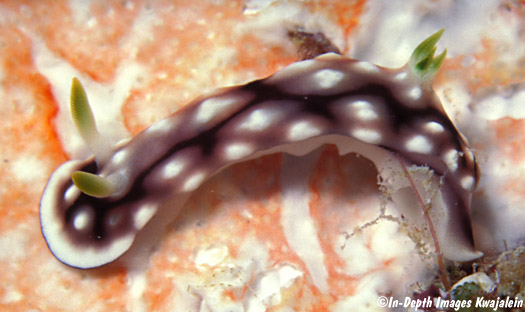
When crawling, this species waves its front margin up and down, almost as if it is feeling for whatever is in front of it with its front margin. There are a few other species that do the same, and curiously, many of those also have this unusual purple coloration under the front margin. On the specimen on the right, the orange patch visible under the skin behind the right rhinophore is a mass of bright orange yolk in the reproductive system. This yolk gets deposited in egg masses as orange blobs of yolk, called extra-capsular yolk bodies, adjacent to each developing ovum.
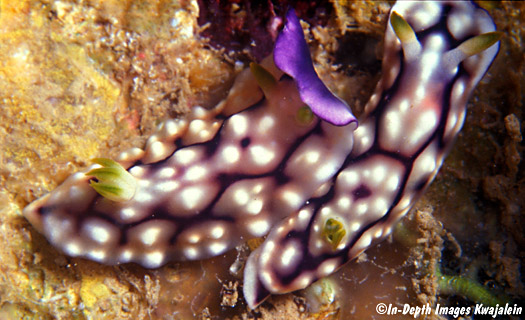
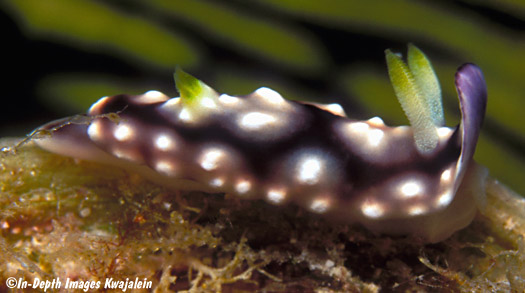
Larger specimens often have the black background around the pinkish white pustules studded with round, bright white spots.
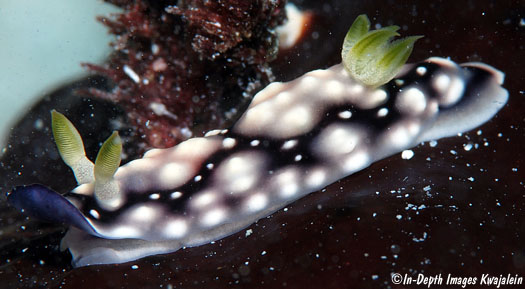
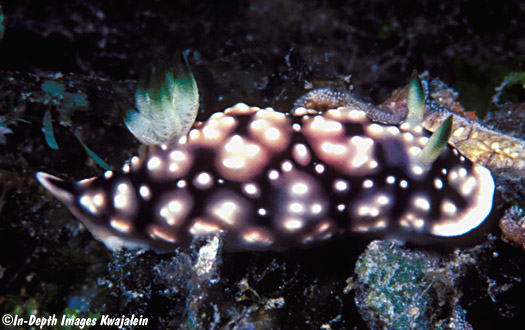
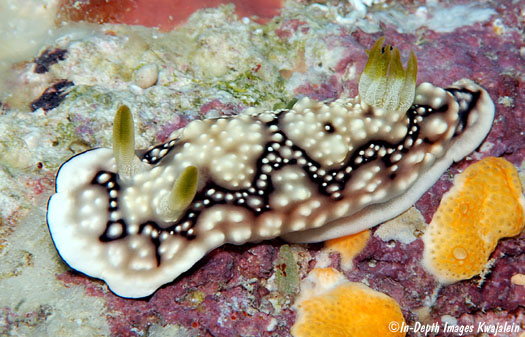
Below is a juvenile Goniobranchus geometricus (at right) along with a full-sized pink Verconia cf romeri.
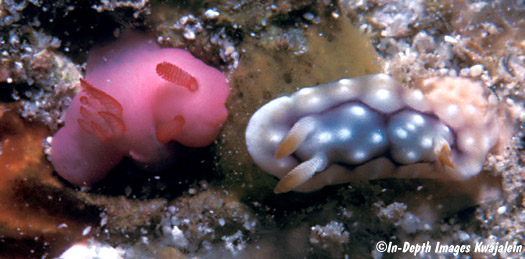
Sometimes the rhinophores and gills of this species are yellow instead of green.
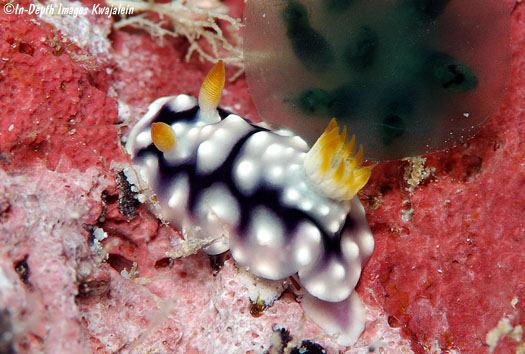
One of the sponges eaten by Goniobranchus geometricus is the purple
Chelonaplysilla violacea near or under all the specimens below. In
the lower one, you can see where the nudibranch has grazed some of the sponge
away.
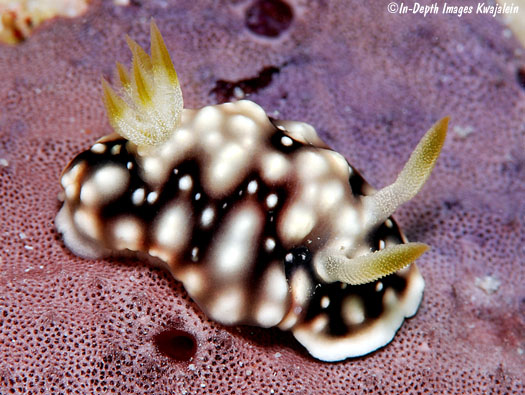
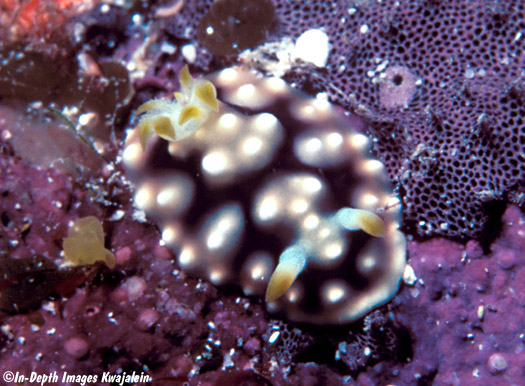
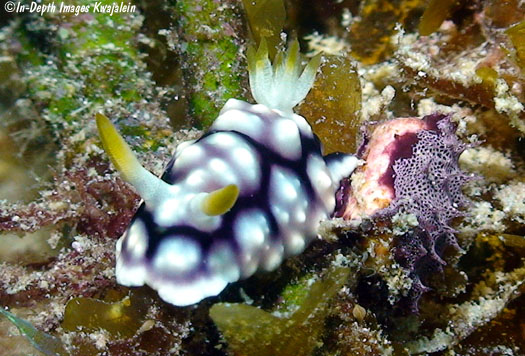
The rhinophores and gill tips on this very small individual embedded in his prey sponge were nearly red.
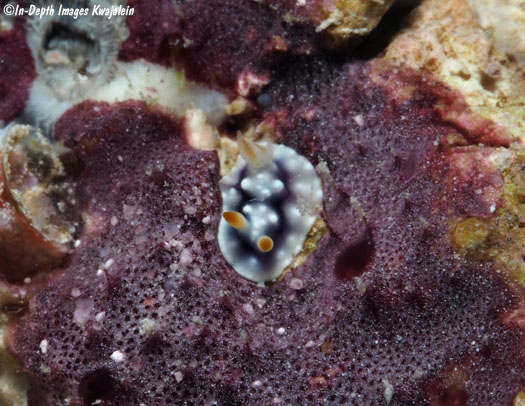
The next three photos are Majuro specimens from Ken Cone and Beth Van Zummeren. First, a closeup of the rhinophores.
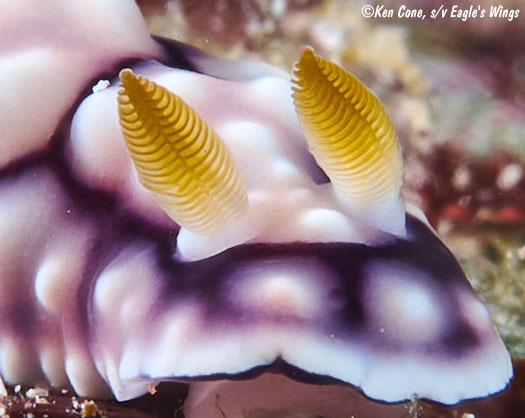
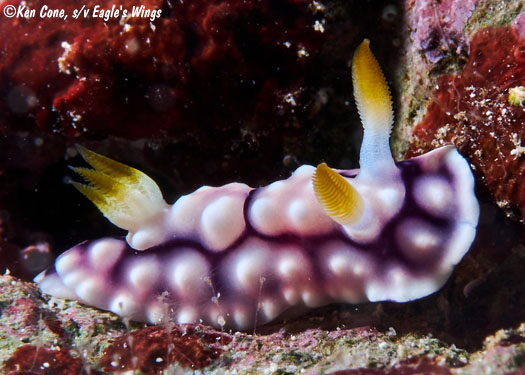
A small juvenile is easily recognized by color pattern.
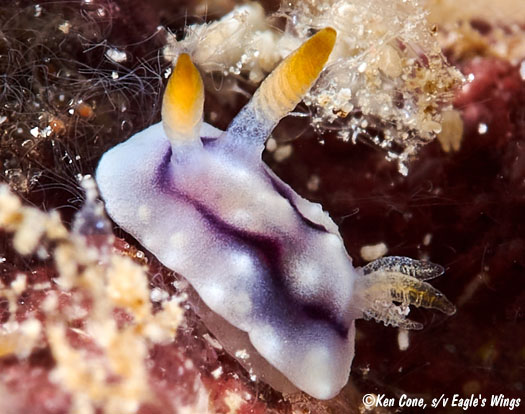
Curious how two individuals with such similar coloration find each other.
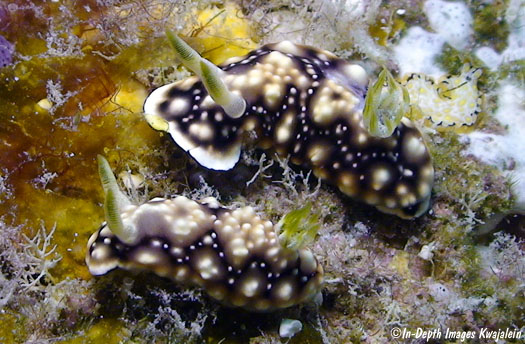
Created 14 December 2005
Updated 30 June 2021